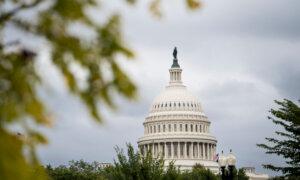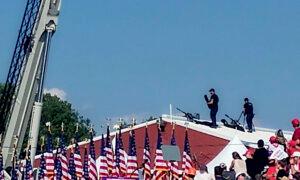A recent Secret Service report also found communication failures between federal, state, and local law enforcement in the minutes leading up to the shooting.
Security and communication lapses between the Secret Service and local law enforcement are to blame for not thwarting the July 13 assassination attempt against former President Donald Trump at a campaign rally in Butler, Pennsylvania, according to a bipartisan interim Senate report released on Sept. 25.
One of the 12 findings in the report was that the Secret Service was informed of a suspicious individual with a rangefinder around the warehouse. The suspect, Thomas Matthew Crooks, ended up on the roof about 27 minutes before the shooting.
The Secret Service security room was notified of this at 5:44 p.m. and the agency’s counter sniper team leader a minute later, according to the report.
Soon after, the Secret Service looked for the individual.
The lead advance agent, site agent, and site counterpart told the committee they did not get the information until after Crooks fired shots.
Additionally, a local law enforcement officer notified fellow officers about Crooks on the rooftop three minutes before the incident, according to the report.
That notification was passed on to the Secret Service about two minutes before the shooting.
The shooting began at 6:11 p.m. and Crooks was killed by Secret Service almost immediately, according to the Secret Service.
Trump and three others were injured by the bullets, while one person died.
Secret Service agents jumped on Trump, who stooped down as the shots were fired, and formed a protective shield around him as they escorted him off the stage and into a car.
Communication between the Secret Service and local law enforcement was “siloed” and the service “did not ensure it could share information with local law enforcement partners in real-time,” according to the committee.
The earlier report released by the Secret Service also blames communication failures for not thwarting the incident.
In addition, according to the committee report, a Secret Service counter-sniper witnessed local law enforcement running toward the warehouse and did not notify Trump’s protective detail as that idea “did not cross [his] mind.”
The Secret Service report corroborates this finding as Trump’s protective detail was “not apprised of how focused state and local law enforcement were in the minutes leading up to the attack on locating the suspicious subject.”
The rally was the first time counter-snipers were present for someone who is not the president, vice president or a candidate not nominated by his or her party, according to the report.
Trump did not become the GOP presidential nominee until a couple of days later at the Republican National Convention.
The counter-snipers were there due to “credible intelligence” of a threat, according to the report.
Additional resources Trump’s Secret Service detail requested, such as more counter unmanned aerial system (C-UAS) personnel and equipment, were denied, advance agents told the committee, saying this would have been helpful.
The C-UAS system did not work until 4:33 p.m., which was after Crooks flew his drone near the rally site.
Secret Service advance agents denied responsibility for the planning and security failures, according to the report, and told the committee the agency and local law enforcement planned together but they had different views on who in the service made the final decisions.
The agents interviewed by the committee didn’t know who was in charge of the security perimeter, according to the report.
The agents told the committee that local and state law enforcement was in charge of security coverage of the warehouse since it was part of the perimeter. A local law enforcement officer told the committee that local law enforcement did not have the “manpower” to secure the warehouse.
The Secret Service lead advance agent, counter-sniper team leader, and site counterpart did not go into the warehouse and no Secret Service advance agent “shared planning documents with state or local law enforcement, or requested state or local operational plans—and those plans reveal no post-standers or patrol assigned to cover the [warehouse] or roof,” according to the report.
Furthermore, a Secret Service counter-sniper team had an obstructed view of the rooftop, according to the committee.
Recommendations
The committee made recommendations such as Congress requiring the Secret Service “to identify defined roles and responsibilities for [Secret Service] personnel responsible for advance planning of any protective event.”
This includes designating one person responsible for all logistics planning.
Also, communications between the Secret Service and federal, state, and local law enforcement should be “properly executed” and that records be maintained.
Finally, the committee and subcommittee said they would continue to investigate the incident.
In a statement to The Epoch Times, Secret Service Chief of Communications Anthony Guglielmi said that the agency has reviewed the report, which he said is aligned with its report, and is working with Congress to address the findings.
The bill is pending in the Senate.
Original News Source Link – Epoch Times
Running For Office? Conservative Campaign Consulting – Election Day Strategies!


